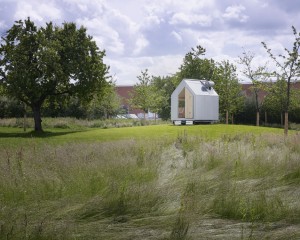Is Your Home A Sustainabuild?
There have been many advances in the realm of renewable and sustainable energy and practices when it comes to applying them to households and businesses, such as friendlier low-energy bulbs, cutting back on paper usage and promoting recycling, and even household tips to keep your appliances running at peak efficiency to avoid surplus energy consumption. But the question has now become whether these efforts are enough, or if we need to push harder down the road towards sustainability through implementing new construction laws, while revisiting lodging and buildings that may be failing to meet eco-standards.
In the United Kingdom, the government has taken it upon themselves to just do that, and to implement practices to drastically reduce their carbon footprint. To hit their targets by the set goal date of 2050, they must retrofit enough houses to equal the size of Cambridge, every month, for the next 40 years – a daunting, yet admirable task. This brave attempt will hopefully pave the way for other nations to follow suit in a (hopefully) global attempt to reduce our carbon footprint and achieve higher levels of sustainable existence.
New construction’s direction could also potentially shifted in a greener direction, should they take a page or two out of architect Renzo Piano’s book, who recently designed one of the most sustainable spaces we’ve yet to see – “a technically perfect and aesthetically attractive refuge, testing the potential of the minimalist house.” The Diogene, or insanely small yet delightfully appealing cabin/hut/retreat space, is designed to be a voluntary retreat space that can exist independent of any local infrastructure due to its ability to collect, clean, and reuse water, not to mention its’ solar capabilities to provide the user with power.
Diogene is equipped with everything you need for living. The front part serves as a living room: On one side, there is a pull-out sofa; on the other, a folding table under the window. Behind a partition, there are a shower and toilet as well as a kitchen, which has also been reduced to the necessary. The house and furnishings form a single unit.
If placed in a remote area, you might even have the opportunity to take advantage of Google’s newest eco-endeavour – solar-powered balloons to spread internet access to remote areas. Do you know of any other sustainable houses or buildings? Are there methods that you practice around your home to support sustainable resources and reduce your own carbon footprint? Let us know on Twitter @enviromint
image credit to Vitra





